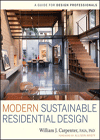Since joining forces in 2004, Fabrizio Barozzi and Alberto Veiga have forged an architecture of undeniable presence that nevertheless defers to its surroundings. A series of competitionwinning projects for cultural venues—from Philharmonic Hall for the Polish city of Szczecin, just completed, to the Museum of Fine Arts of Lausanne, Switzerland, in progress—have catapulted the Italian-Spanish partnership into a busy pan-European practice. Now based in Barcelona, the two first met in the studio of architect Guillermo Vázquez Consuegra in Seville, Spain, where Barozzi had arrived from the Università IUAV di Venezia on an Erasmus Scholarship, and Veiga had moved after working for Francisco Mangado in Pamplona, Spain.
Their early designs are particularly assertive in form, such as the Philharmonic Hall, whose facades of repeated glass-clad gables offer a ghostly, expressionist echo of the steep roof lines of the city. But in subsequent projects, they have given priority to resolving public spaces in response to a building’s context. In Lausanne, for example, they “spent a lot of time trying to make a stupendous building,” says Veiga. “But finally we understood that the best way to open a conversation with the site was to make a stupendous void.” He describes the result as “a plaza with three buildings around it that try to pass unnoticed.”
Similiarly, their addition to the Graubünden Museum of Fine Arts in Chur, Switzerland, is largely underground, to conserve the existing garden on the site. They compare their design for a music conservatory in Brunico, Italy, to a thick garden wall, which surrounds the grounds of the existing building. And a dance school in Zurich is conceived as a stepped terrace and covered portico overlooking one of the city’s river channels.
To convey the spirit of these quiet volumes for their competition entries, Barozzi, who is 38, and Veiga, 41, spend months preparing exquisite black-and-white renderings, seeking to capture every nuance of light, shadow, texture, scale, and density of mass. Sometimes these drawings recall the stark monumentality of Étienne-Louis Boullée, as in their presentation of the soaring entry hall of the Lausanne project, bathed in daylight. In others, their design recedes into the background, as in their depiction of the shady, arcaded walls of the dance school in Zurich. “In addition to responding in formal terms to a context, we think it’s just as important to capture something one might call atmosphere or mood,” Veiga maintains. “If architecture is a language, we are interested in how this language is pronounced, its intonations.”
The two partners have won over juries with more than their extraordinary renderings. Their process of design through condensing, reducing the building program to an essential volume, seems to have struck a chord with the general zeitgeist of Europe in its post-economiccrisis retrenchment. After more than a decade of outrageous icon-building worldwide, during which architects have sought to outdo one another in formal experimentation, the times seem receptive to the more recessive intensity that Barozzi and Veiga offer.
Barozzi / Veiga
FOUNDED: 2004
DESIGN STAFF: 15
PRINCIPALS: Fabrizio Barozzi, Alberto Veiga
EDUCATION: Barozzi: Università IUAV di Venezia, M.Arch. 2003; Veiga: Universidad de Navarra E.T.S.A., M.Arch. 2000
WORK HISTORY: Barozzi: Guillermo Vásquez Consuegra, 2003; Veiga: Guillermo Vásquez Consuegra, 2001–03; Patxi Mangado, 1997–2001
KEY COMPLETED PROJECTS: Philharmonic Hall, Szczecin, Poland, 2014; Ribera del Duero Headquarters , Roa (Burgos), Spain, 2011; Concert Hall, Águilas (Murcia), Spain, 2011 Key current PROJECTS: Graubünden Museum of Fine Arts, Chur, Switzerland, 2012–16; School of Music, Brunico, Italy, 2012–17; Museum of Fine Arts, Lausanne, Switzerland, 2011–17; Tanzhaus, Zürich, 2014–18
WEBSITE: www.barozziveiga.com





















